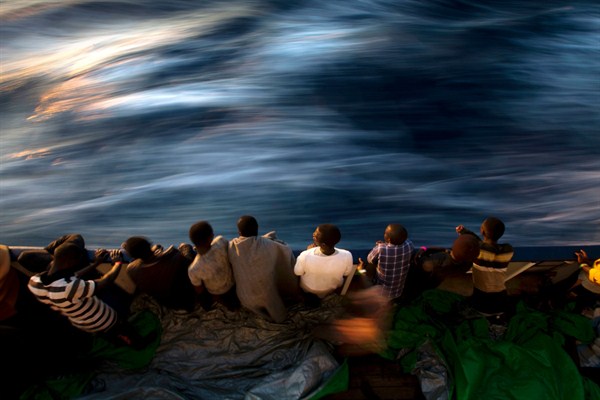Editor’s note: The following article is one of 30 that we’ve selected from our archives to celebrate World Politics Review’s 15th anniversary. You can find the full collection here.
As people continue to migrate—and die—by crossing the Mediterranean Sea by boat, it is time to reflect on what has gone wrong with the 2015 European Agenda on Migration. The agenda purports to be a comprehensive, multidimensional framework designed to address the crisis of increased precarious migration to Europe and associated fatalities at sea. It has led to the development and implementation of policies across a range of priority areas. Yet without taking into account the journeys and experiences of the actual people making their way to Europe—by choice or necessity—European policies will continue to fail, and thousands more will perish while pursuing safety.
The Mediterranean Sea is by no means a new site of migratory passage, but it has certainly become one of particular prominence in recent years. Heightened numbers of sea arrivals to the European Union were recorded in 2011 from Tunisia and other countries associated with the so-called Arab Spring. A temporary drop was then followed by an increase in 2014, with a peak of over 1 million sea arrivals to the European Union recorded in 2015. The number of sea arrivals subsequently dropped off in 2016 and 2017, but remained high compared to those arriving prior to 2011. Meanwhile, fatalities at sea have increased year-by-year since 2014, with the highest recorded total of lives lost standing at over 5,000 in 2016. For many, the migration crisis at Europe’s shores thus remains a pressing concern.

